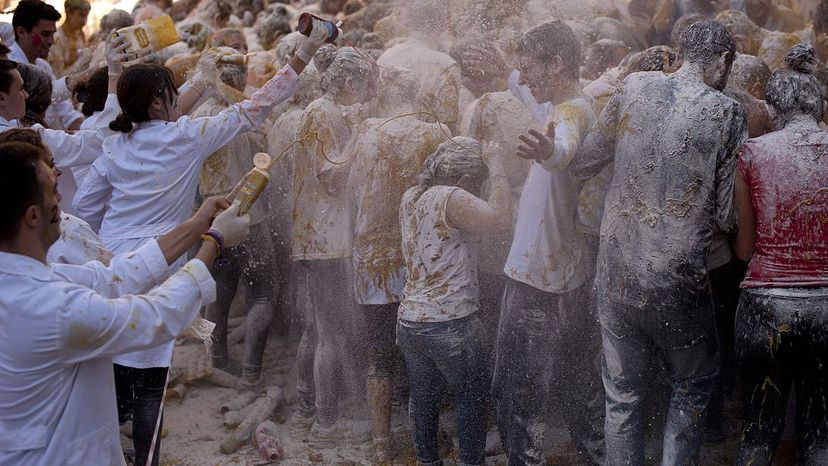The Psychology of Hazing

Hazing has a long history in civilization. Many cultures have some kind of initiation rite that a boy undergoes to become a man, which some psychologists consider a form of hazing. Plato observed hazing among college students in the 4th century B.C.E. In 1340, the University of Paris had to forbid hazing on pain of expulsion. The first example of a hazing death was John Butler Groves in 1838 at Franklin Seminary in Kentucky, according to a family history [source: Nuwer].
Hazing primarily exists in groups that are regularly recruiting new members. College fraternities are a great example, because they lose a batch of seniors to graduation every spring and the ranks need to be filled by new freshman in the fall. The same annual "restocking" process happens in high school marching bands, college sports teams, the military, school theater groups and fire departments.
Advertisement
In this way, hazing can partially be explained from an evolutionary perspective. The survival of a "multigenerational" group over time requires the continual recruitment of new members, but those new members need to win the trust of the group and prove their commitment. "Freeloaders" who won't work hard and sacrifice on behalf of the group are threats to the group's very survival. This explains why rites of passage of initiatory rituals have existed across all human societies [source: Cimino].
Even today, when organizations defend hazing, they often say that only by passing through that physical and psychological gauntlet can a recruit prove that they are committed to the "values" and "traditions" of the organization, and show that they can endure the "heavy load of responsibilities" that comes with being an active member of the group [source: Zwecker].
Hazing organizations have no trouble finding new recruits because humans in general are social creatures who seek out the companionship and approval of their peers. Hazing organizations capitalize on this basic human need by portraying themselves — at least at first — as a warm and welcoming "brotherhood," "sisterhood" or even a big "family." At most fraternities and sororities, recruits are "little brothers" and "little sisters" and older members are "big brothers," "big sisters" and even "mothers" and "fathers."
Which raises the question, why would someone remain loyal to a "family" that beats and degrades them? For that, you need to understand the psychological concept of cognitive dissonance. Humans are very good at rationalizing or ignoring two realities that are in direct conflict with each other. In terms of hazing, those two realities are the friendship and love of your "brothers" versus the demoralizing experience of being hazed by those very same people. To reconcile those conflicting narratives, most individuals that are hazed "rewrite" or recast the traumatic hazing as a valuable bonding experience.
That helps explain why nine out of 10 college students who experienced one or more hazing rituals — including drinking games, yelling and name-calling, wearing demeaning clothing, being forced to exercise until they collapse — refused to recognize those experiences as hazing. It also explains why 95 percent of hazed students failed to report the hazing. Among the explanations for not speaking out were answers like [source: Allan]:
- "It made me and my brothers better people."
- "I had a choice to participate or not."
- "It was no big deal."
- "No one was harmed."
- "Hazing is a rite of passage. If you can't take it, get out."
There are many other interesting theories around why hazing exists and persists, despite widespread agreement that it's dangerous. An important one is the psychological concept of "groupthink," in which members of highly cohesive groups suppress their own moral objections
— "Isn't this going too far?" — and go along with the greater will of the group [source: Cornell]. What victims of groupthink don't understand is that many other group members have the same moral concerns, but if none of them speak up, the behavior continues.
A hazing survey at Cornell University found that 87 percent of students believe that "it's never OK to humiliate or intimidate new members." Yet hazing persists at Cornell and on every college campus in America.